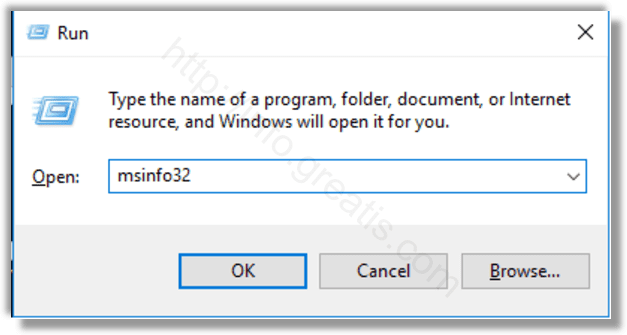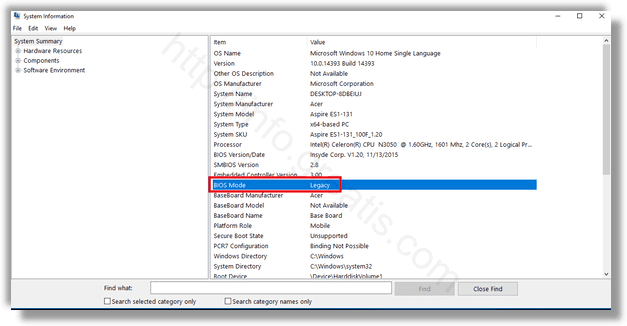You might want to find your current BIOS version in order to see if your device has the latest BIOS or UEFI firmware release installed.
BIOS is a special software built into the computer’s motherboard. It starts the operating system installed on the PC. It is also referred to as main board firmware.
UEFI (Unified Extensible Firmware Interface) is a modern version of firmware created as a replacement for BIOS. It is intended to address the limitations of BIOS and make the initial hardware configuration more flexible and simple.
Here is How to Tell If Windows 10 Runs in UEFI Mode or in the Legacy BIOS Mode:
- STEP 1: Press the
 hotkeys together on the keyboard and type msinfo32 command in your Run box and press OK (or hit Enter key) to open the System Information app.
hotkeys together on the keyboard and type msinfo32 command in your Run box and press OK (or hit Enter key) to open the System Information app.

- STEP 2: Click the System Summary section on the left. In the System Summary section, look at the BIOS mode value in the right pane. It can have the value ‘Legacy’ or ‘UEFI’. The legacy mode means that your hardware does not support UEFI, or that it’s disabled for some compatibility reasons.

You can use this information in case you need to create some bootable media such as a USB stick. Using the output from MSInfo32, you can be sure which type, bootable UEFI USB stick or bootable USB stick (legacy) to create to install Windows 10.